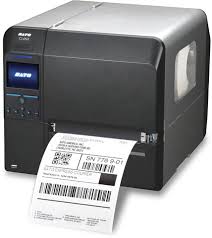A common question we are asked is, “hat is the difference between thermal transfer and direct thermal transfer label printing?” Well, it’s all in the name to start, but there are a lot of considerations a company should review before making the decision on which system to go with.
What’s in a name?
Thermal transfer printing uses a heated ribbon to produce durable, long-lasting images on a wide variety of materials. But, when it comes to direct thermal printing no ribbon is used. Instead, the image is printed directly onto the material.
How do they work?
In thermal transfer printing, a thermal printhead applies heat to a ribbon, which melts ink onto the material to form the image. The ink is absorbed so that the image becomes part of the media. This technique provides image quality and durability that is unmatched by other on-demand printing technologies. Direct thermal printing uses chemically treated, heat-sensitive media that blackens when it passes under the thermal printhead. Direct thermal printers have no ink, toner, or ribbon.
Why choose one over the other?
Direct thermal printers are less expensive overall versus thermal transfer printers, but DT media is more sensitive to light, heat and abrasion, which reduces the life of the printed material. If you are printing labels for products that will be outside for extended periods of time or will have a long shelf life it is best to use thermal transfer labels. Thermal label printers are ideal for barcode printing because they produce accurate, high-quality images with excellent edge definition. Thermal printers are engineered to print within tight tolerances and to produce the exact bar widths that successful barcode printing and scanning require. Each technology can produce one- and two-dimensional barcode symbologies, graphics and text at the same print resolutions and speeds.
Their simple design makes direct thermal printers durable and easy to use. Because there is no ribbon, direct thermal printers cost less to operate than inkjet, laser, impact, and thermal transfer printers. Most mobile printers use direct thermal technology. For companies that move product quickly in and out of their warehouse, don’t require lifetime identification, or don’t store the products outside, direct thermal printing might be a great option.
Thermal transfer printers can accept a wider variety of media than direct thermal models, including paper, polyester, and polypropylene materials. Thermal transfer printers can create extremely durable wristbands, asset tags, and certification labels, in addition to common labels, tags, and tickets. The specific label material and ribbon must be carefully matched to ensure print performance and durability.
By selecting the right media-ribbon combination, as well as specialty adhesives, users can create archival-quality labels to withstand temperature extremes, ultraviolet exposure, chemicals, sterilization, and more. Typical thermal transfer applications include: product identification; circuit board tracking; permanent identification; sample and file tracking; asset tagging; inventory identification; certification labels such as UL/CSA; laboratory specimens; cold storage and freezers; and outdoor applications.
Other considerations:
- Thermal Print Head Life & Cost
- Printer Configuration & Cost
- Media Selection & Cost
- Label Life Requirements
- Environmental Considerations, i.e. water soluble inks
- Printer maintenance and repair services



Comments are closed.